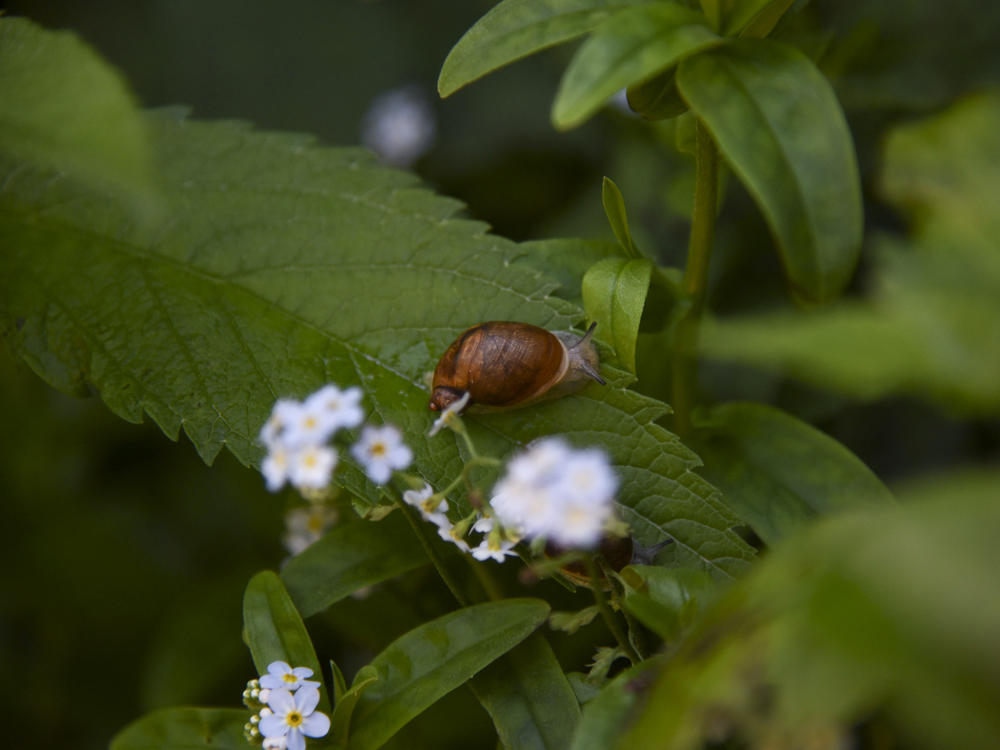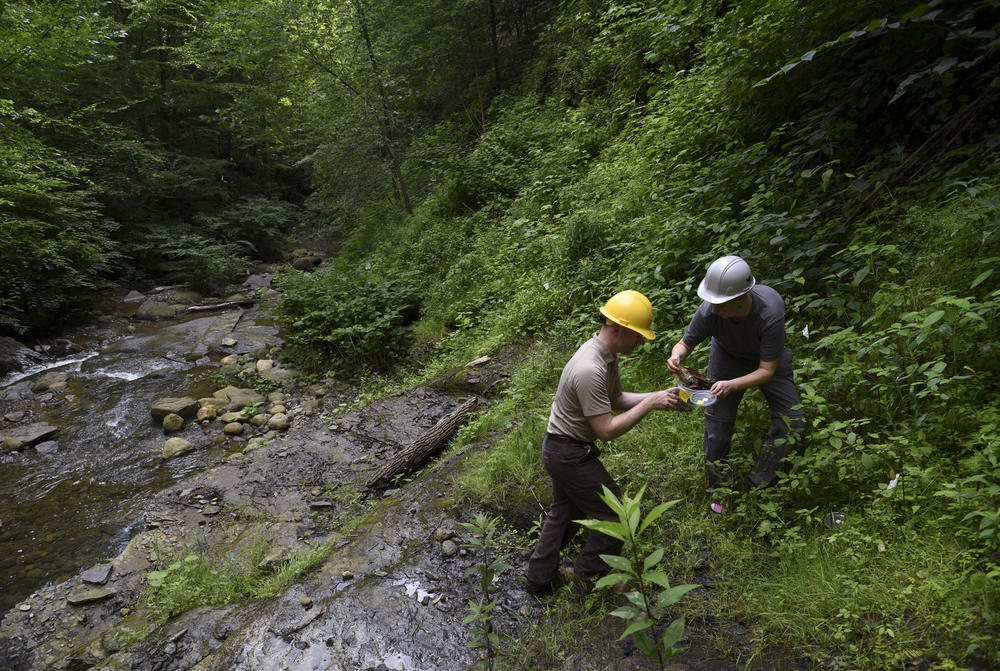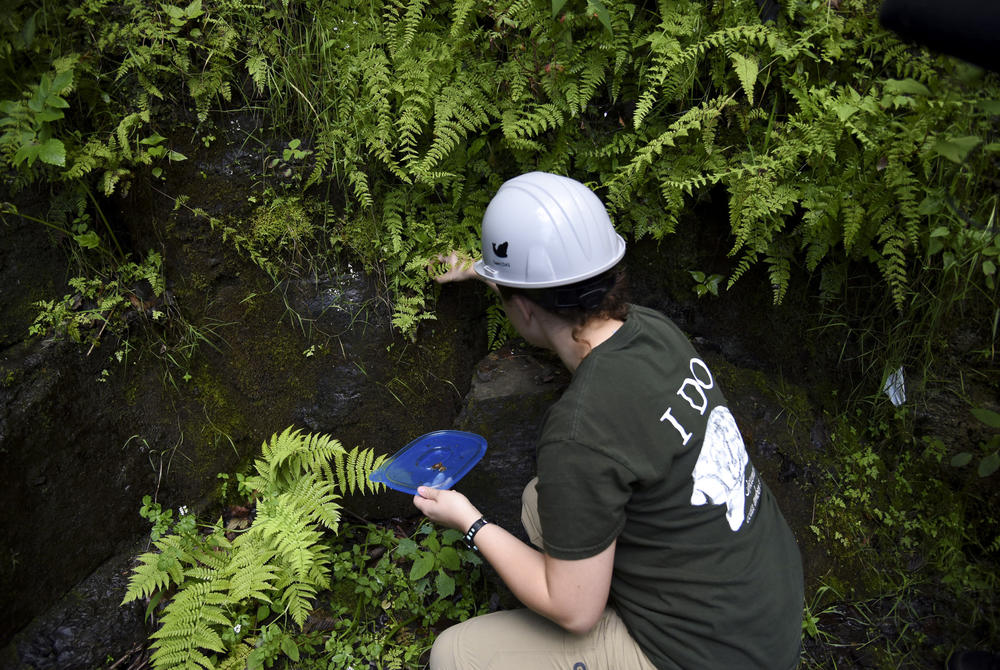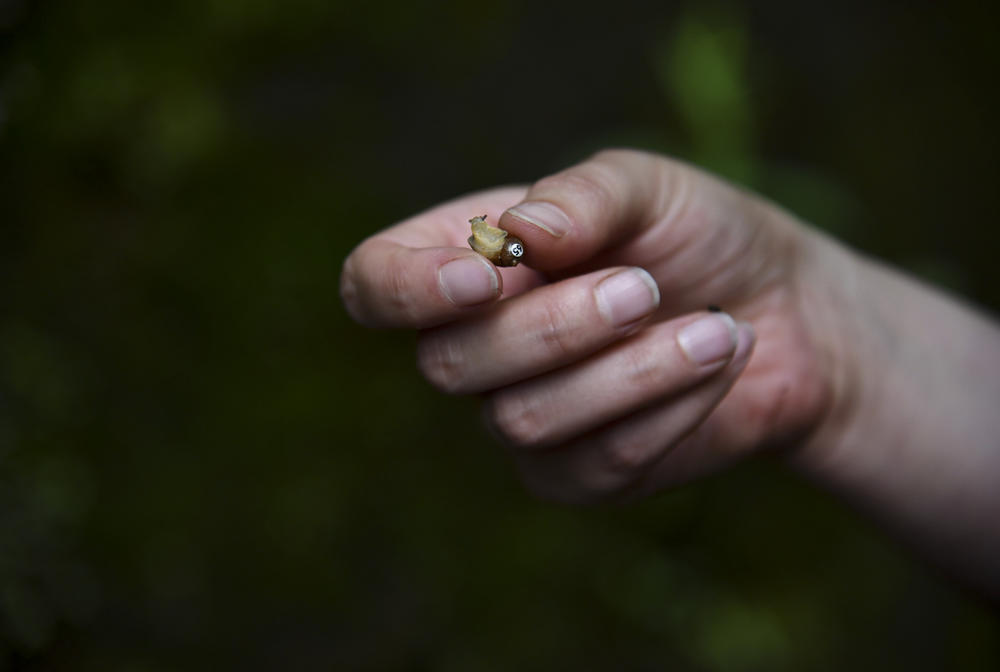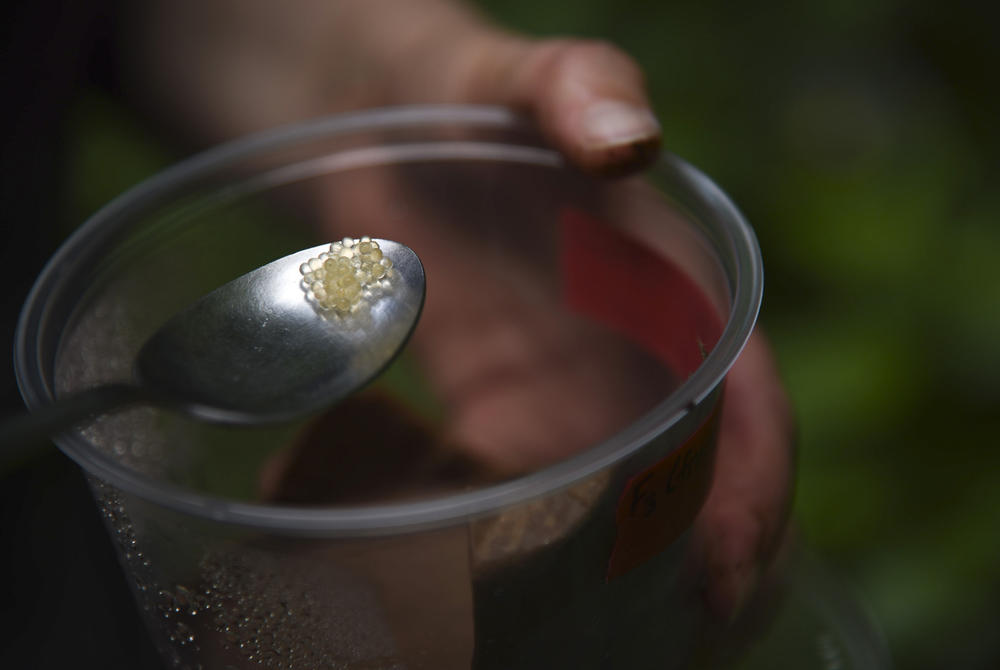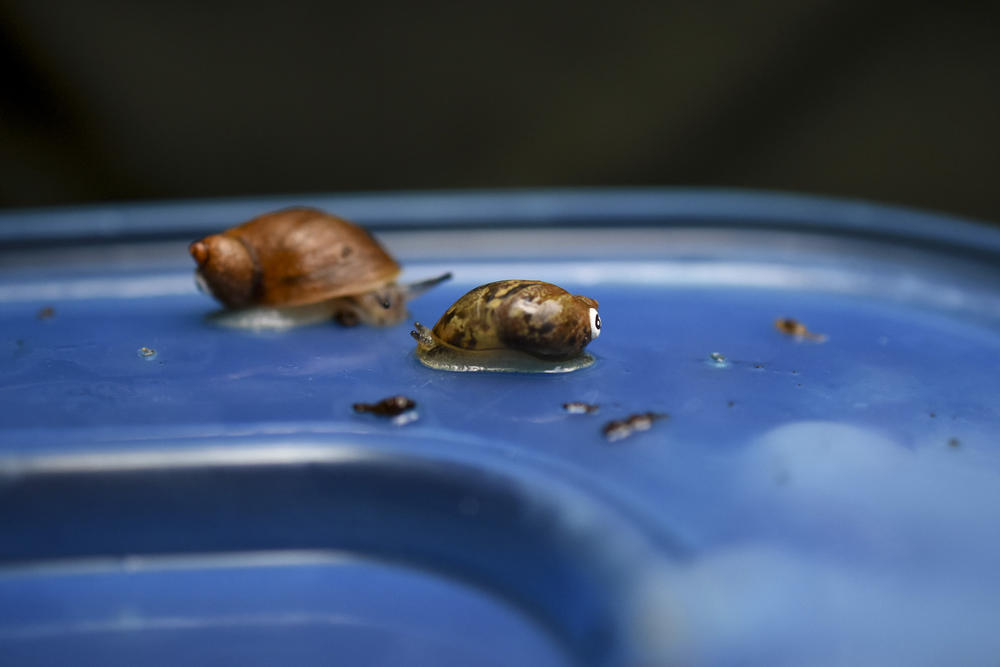Section Branding
Header Content
The years-long journey to save a tiny snail you've never heard of
Primary Content
Hiking is tricky when you're carrying a federally threatened species. Ally Whitbread carefully hopped over logs and dodged prickers while toting a cooler full of tiny, rare snails.
"I feel like I've got like 500 babies to take care of — just a very crazy mother hen," she said.
The Chittenango ovate amber snails and eggs inside are facing extinction — only dozens are estimated to remain at one waterfall in Upstate New York — but Whitbread is part of a team transporting a captive-bred population to a new, remote home for a shot at survival. Such a recovery process can take years to decades, and success is uncertain, but scientists are racing to better understand our planet's biodiversity before species are wiped out.
The team of snail researchers spent years growing a population in a lab at the College of Environmental Science and Forestry, a state school in Syracuse, N.Y. The hike to a hidden waterfall is a chance to examine what makes them thrive in the wild, or what doesn't.
These efforts to sustain and study rare species can unlock their hidden benefits to humans, said University of Colorado Boulder ecology professor Laura Dee. She said some plants and animals may possess unique traits that can provide what she calls option value.
"The idea that we might want to have a species down the line because of uncertainty of what the future is going to bring, and what role that species might play," Dee said.
Like the once-rare Madagascar rosy periwinkle—a compound from the plant is now used in leukemia treatments. While not every species will cure cancer, Dee said more study is needed because we don't fully know what happens if we lose them.
"Theory and other papers have shown that actually the loss of rare species can be particularly destabilizing, because they might have these really unique and important feeding relationships or links," she said.
Even just observing species in their habitats can prove helpful. University of Utah biology professor Jack Longino is cataloging the planet's ants. He said understanding how the insects communicate could help programmers with robotics.
"To create things, to make new technologies, we're sort of imitating nature all the time," Longino said.
The Chittenango ovate amber snail doesn't have any known unique traits critical to humans, and it's been a lengthy journey just to attempt to save them. The half-hour hike to the new habitat is the latest step in a process that's lasted more than five years—from site surveys and land negotiations to just keeping the sensitive species alive in the lab.
Senior research support specialist Cody Gilbertson said the drive to save them can go deeper than just science.
"There's no way that I'm not going to be emotionally attached to these guys—they're so cute," Gilbertson said.
The critter is no bigger than a fingertip and peers up at its caregivers from the black tips of its translucent tentacles.
"You know their big eyes are staring back at you like — there's no way that you're not going to kind of fall in love," Gilbertson said.
Dropping them off at their new waterfall home wasn't even the end — it'll be another 5 years before the team knows whether the snails can survive there. They'll take the hike twice a month to track their progress.
Copyright 2023 NPR. To see more, visit https://www.npr.org.
